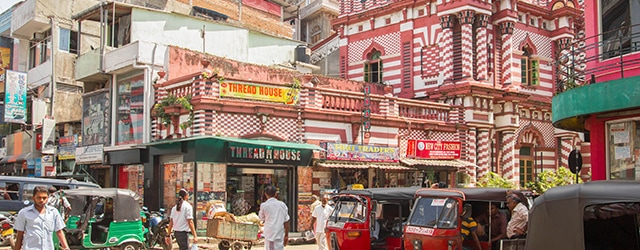Attracting foreign direct investment is a top priority for Sri Lanka as it transitions from an inward-facing economy toward a more diverse and export-oriented one.

|
SRI LANKA: VITAL STATISTICS |
|---|
|
Location: South Asia |
|
Neighbors: India, Maldives, Bangladesh |
|
Capital city: Colombo |
|
Population (2016): 21,203,000 |
|
Official languages: Sinhalese and Tamil |
|
GDP per capita (2017): $4,065 |
|
GDP growth (2017): 3.19% (provisional) |
|
Inflation (2016): 4.0% |
|
Currency: Sri Lanka rupee |
|
Investment promotion agency: Board of Investment of Sri Lanka |
|
Investment incentives available? Incentives vary depending on factors such as size of investment and the sector |
|
Ease of Doing Business rank (2017): 111 |
|
Corruption Perceptions Index rank (2017): 91 |
|
Political risks: Continuing ethnic tensions (not a problem in all areas) |
|
Security risks: Safety and security concerns; increased criminal activities and petty crime; India concerned that China’s port projects could eventually become Chinese military base |
|
PROS |
|---|
|
Government welcomes FDI |
|
World Bank is providing $100 million loan for education upgrade |
|
CONS |
|---|
|
Some legacy of hatred remains from the civil war |
|
Dengue fever |
|
Risk of drowning at high tide |
|
Urban traffic congestion |
|
Sources: Best’s Country Risk Report: Sri Lanka, British Government Foreign Travel Advice, Central Bank of Sri Lanka Annual Report, International Monetary Fund, Lanka Business Online, Reuters, Sri Lanka Internet Newspaper, Transparency International, World Bank |
|
For more information, check out Global Finance‘s Sri Lanka data page. |
High government debt, low debt affordability and huge external payment obligations coming due pose strong challenges for Sri Lanka’s economy. The US State Department projects that the country’s external debt will reach US$3.8 billion in 2019.
The situation has become increasingly urgent. According to the Central Bank of Sri Lanka, GDP growth dropped to 3.19% in 2017, the lowest in 16 years. To realize its aspirations to be an upper-level middle-income country, Sri Lanka requires annual growth between 6% and 8%. From the end of the civil war in 2009 until 2015, Sri Lanka enjoyed average annual GDP growth of 5.8%. The recent slowdown shows the challenge of transitioning from a rural to a more urbanized economy.
Ongoing foreign direct investment (FDI) inflows are necessary for the country to achieve financial stability and offset its fiscal weakness, according to Moody’s Investor Service. Continuing fiscal consolidation and efforts to reduce external obligations will be important in mitigating the country’s financial risks, the rating agency adds.
Near-term, however, substantial improvement in fiscal strength is unlikely, given the country’s low efficiency in tax collection. The government wants to deepen its reliance on the private sector and attract private investment, explains Tatiana Nenova, World Bank program leader for Sri Lanka and the Maldives. But not every inflow of capital is a wise bet, she cautions.
“The composition is not as mature as you would want it to be,” she tells Global Finance from Colombo. “The problem with [infrastructure] is this is not the most productive investment. This is not the investment that will create jobs. This is not the investment that will diversify your economy. And if you do not have a diversified economy, then you cannot export.”
Manufacturing, information technology and tourism create lasting jobs and bring in foreign currency, Nemova explains, while infrastructure construction jobs are temporary.
The Sri Lankan government has embarked on a list of reforms. Much of the land is government-owned, while land administration is weak and cumbersome and has been identified as a major obstacle to FDI. As a solution, the government is investing in new economic zones.
FDI also requires logistics for importing product inputs and exporting the finished products. In helping to achieve this, the government has enlarged the Colombo port and plans further expansion. “Now it [already] has more capacity than it is using,” Nenova says. “When it increases again, it will have even more, so the government is clearly planning for further FDI.”
The World Bank sees many encouraging signs, despite the island nation’s somewhat anti-export history. The public debt-to-GDP ratio declined slightly last year due to a primary surplus. Poverty declined from more than 15% of the population pre-financial crisis to just 4.1% in 2016. And last year’s plummeting GDP? The bank says it was largely due to natural disasters: a vicious combination of Mayfloods and prolonged drought whose economic impact should disappear.



